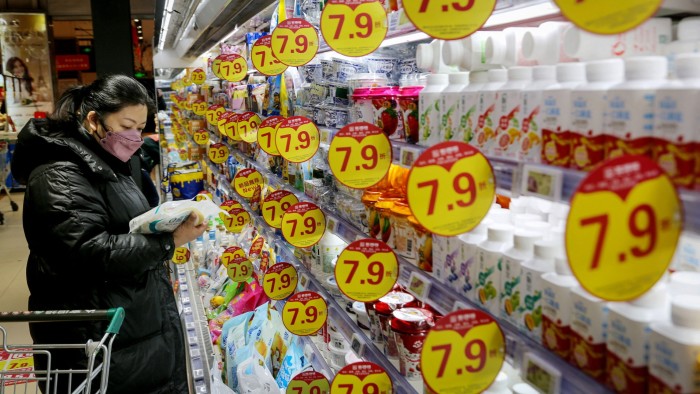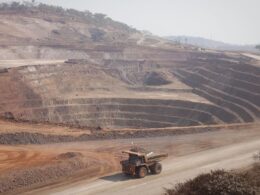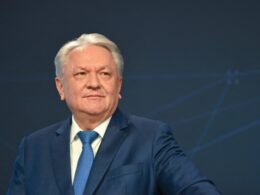Stay informed with free updates
Simply sign up to the Chinese economy myFT Digest — delivered directly to your inbox.
Chinese consumer prices rose at the fastest pace in five months in January, as a bump in spending over the lunar new year holiday period breathed life into the world’s second-largest economy, which has been beset by weak demand.
China’s consumer price index gained 0.5 per cent in January compared with the same period last year, official data released on Sunday by the National Bureau of Statistics showed, ahead of the 0.4 per cent growth forecast by economists polled by Reuters.
That figure marked an acceleration from December, when CPI crept up 0.1 per cent year on year, and was the fastest growth rate since August.
Producer prices, a measure of factory gate inflation, fell for a 28th consecutive month, declining 2.3 per cent. The fall was marginally faster than economists’ forecast of 2.2 per cent and matched December’s contraction.
January’s inflation reading was boosted by increased consumer spending over the lunar new year, as millions of Chinese residents travel to their hometowns and exchange cash-filled red envelopes. The holiday, which fell earlier than usual in 2025, also tends to see an uptick in spending on items such as food, as consumers prepare for large family gatherings.
“From a year-on-year perspective, service and food prices increased significantly due to the Spring Festival being in a different month,” Dong Lijuan, an official at the NBS, said in a statement, adding that the reading was also affected by a recovery in petrol prices.
Prices for aeroplane tickets were 8.9 per cent higher than a year earlier, while travel-related costs rose 7 per cent, Dong added.
The stronger consumer price growth represented a rare bright spot for China’s economy, which has been fighting outright deflation after a property sector crisis now in its fourth year and strict pandemic lockdowns damped consumer confidence.
Meanwhile, the manufacturing sector, which was previously a source of growth alongside exports, has also begun to falter.
Factory prices have been stuck in a prolonged slide for more than two years, while output contracted for the first time in four months in January, as Chinese producers have grappled with increasing overseas competition, a situation that analysts suggest will only worsen as US President Donald Trump reopens his trade war with Beijing.
Trump this month imposed an additional 10 per cent tariff of Chinese goods, a move he described as the “opening salvo”. China retaliated with levies of 10 to 15 per cent on goods including US liquefied natural gas, coal, crude oil and farm equipment, which are due to take effect on Monday.
China’s President Xi Jinping has vowed “vigorous” measures to strengthen consumer spending and policymakers have unveiled a series of stimulus measures, but analysts believe that deflationary pressures will continue to plague the Chinese economy in 2025. Beijing also faces a balancing act trying to reflate the economy while Trump’s tariff measures pile pressure on renminbi.
Rising trade tensions have also raised concerns about capital outflows and constrained the ability of the People’s Bank of China, the country’s central bank, to lower rates. The PBoC added a record Rmb2.2tn ($300bn) in short-term funds into the financial system ahead of the new year break to help ease liquidity pressures that are heightened over the period.
Source link









